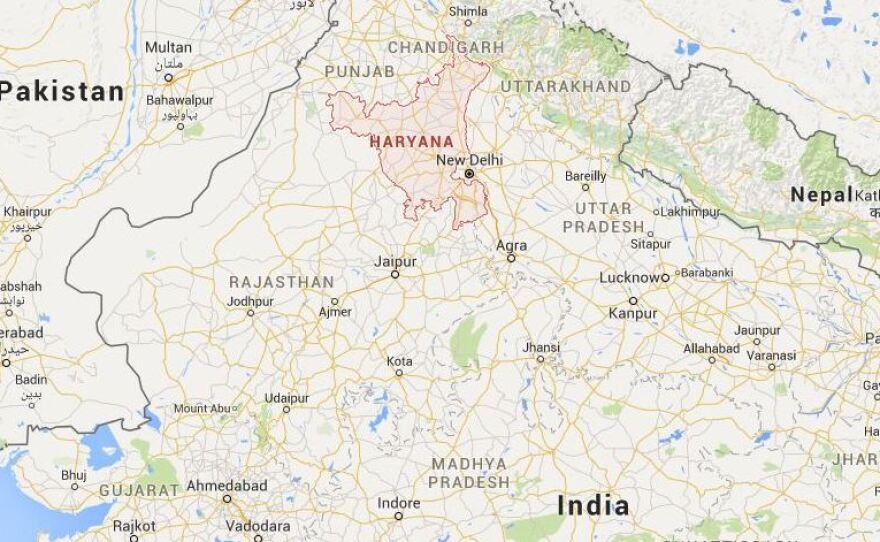
India has deployed thousands of army and paramilitary troops to quell violence that authorities say has killed at least 10 people in the northern Indian state of Haryana. A caste known as the Jats is leading the unrest to demand affirmative-action benefits from the government.
Jats make up more than a quarter of Haryana's 25 million people. They seek to be included in the official category of "Other Backward Classes."
Under India's constitution, the government is obligated to promote the welfare of so-called OBC's with measures such as quotas for government jobs and college admission, known as "reservations" in India. The aim is to help the country's lower castes overcome discrimination.
To be designated an OBC a caste must be found to be "socially and educationally disadvantaged." Jats rank fairly high in Indian social hierarchy, playing a predominant role in agriculture and dominating a third of the seats in the Haryana state assembly.
But a rapidly growing population and a lack of job opportunities are fueling Jats' discontent. In recent days, Jat protesters blocked highways, torched railway stations, and staged sit-ins on railroad tracks that stopped hundreds of trains. Protestors reportedly sabotaged pumping equipment at a water treatment plant that provides most of the capital New Delhi's water supply.
The push by Jats to move from a forward caste to a backward one is the latest flashpoint over caste designation in India. The agitation mirrors the example of the Patel caste, which has been fomenting in the state of Gujarat to also qualify as an "Other Backward Class."
Some current members of the Other Backward Classes group are angry, saying that if Jats were to be eligible for government quotas, their own "reservations" and entitlements would be cut.
While the army may be able to restore order to the streets in Haryana, writer and social scientist Nalin Mehta says, "solving this reservation mess will require a wider political consensus on caste ... and the downward caste mobility this has sparked off."
Copyright 2016 NPR. To see more, visit http://www.npr.org/.






